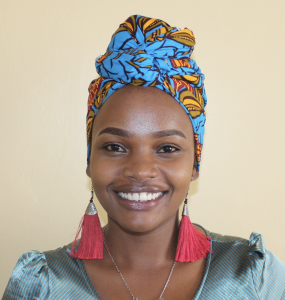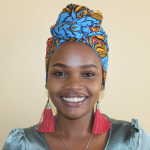This project is a part of our shared program with Western Water and Sanitation Forum (WEWASAFO). Our team is pleased to directly share the below report (edited for clarity, as needed).
Background Information
This unprotected spring is located in Nakhayaka Village, Lukume sub-location, Lukume location, West Kabras Ward, Malava Contituency in Kakamega County. The spring serves over 36 households with a total population of 288 people of which 140 are men and 148 are women. The spring's water is used for both domestic and farming purposes.
Justification
This spring is contaminated surface run-off and human activities, such as people stepping into the water as they fetch. The community's animals do not have a trough to drink from, so they are allowed to drink directly from the source.
This all greatly contributes to the spring's contamination issues, and forces the women to wait for the water to settle and refresh. The community members have been drinking this water without boiling it, and appear to be oblivious of the dangers of contamination. However, parents have noticed that cases of typhoid and diarrhea have been common among the children. "The children in the community were always getting sick," says Mirriam mother of three, "They always had diarrhea, colds and many sores on their skin."
That sanitation situation is also poor. Most people's latrines are dilapidated, and other people lack latrines altogether. Those that have no other place to use the bathroom are forced to go in the bushes. This waste is washed into the spring during rainy weather.
Many people are oblivious to good hygienic practices, exacerbating parasitic infections. Such worms, though not fatal, have resulted in stunted growth and debilitation among children.
Women are especially affected by the lack of sanitation facilities. These facilities would give them privacy, but they instead suffer from a loss of dignity. Esther, a young married woman in the village asks, "Where can you hide?" She has to wait until the dark of night to use the household bathroom to avoid men's eyes, or must use the bush during the day.
These community members are urging WEWASAFO to consider protecting their spring so they can access safe water. They are also asking for new sanitation platforms. "The main problem in our community is related to dirty water and poor sanitation. If the whole community has poor hygiene, they spend more time and money on treatment. If we have clean drinking water not so far from the community, that would be great and we shall have fewer cases of diarrhea diseases,' says Mr. Namburu.
Water and Sanitation Management Committee Training
This training was held from October 13-14 at community member Mr. Peter Wanyanga's homestead. There were 17 participants of which 14 were female and three were male. The training's aim was to equip the committee with the necessary skills to manage and maintain Namburu Spring.
The facilitator made it clear that community participation is vital for the project's success. The organization comes in and gives 80% while the community should meet them with 20%. This 20% will give the people a sense of ownership which promotes project sustainability. Here is a list of local materials that should be provided by the community: ballast, hardcore, bricks, clean sand, and fencing poles. The community is also expected to be hospitable to any work teams, providing them with food and lodging if needed.
For the first session, the group brainstormed important times that people should wash their hands, such as: After using the latrine, before and after cooking, after changing diapers, and before eating. Participants were asked to demonstrate how they would wash their hands, but the facilitator pointed out that they were missing many vital steps. The facilitator took over and showed the group how to effectively and thoroughly wash hands using soap and water. Each person had an opportunity to practice in front of everyone, and were encouraged to share the proper method with the rest of the community.
The group also enjoyed a practical session at the spring, where they began by listing ways the water is dirtied: washing clothes at the spring, watering animals, defecating near the spring, latrines within 50 meters, children playing, bathing, and farming in the vicinity. After realizing the negative impact of these activities, the committee purposed to keep these from becoming commonplace.
Participants were very grateful for the efforts of WEWASAFO staff to teach them about good health. However, the group was overwhelmed with the amount of knowledge they received within two days, and would have hoped for a longer amount of time to let these new sanitation and hygiene practices sink in! Let's hope they took good notes!
Community Health Worker Training
The community health worker (CHW) training took place from October 15-16 at the same homestead. This time, training was attended by 12 people of which nine were female and three were male. The purpose of CHW training is to appoint and equip CHWs with the skills needed to practice and promote good health and hygiene practices within their community. After training, each CHW is expected to reach out to at least five households and sensitize the community about how to prevent disease.
Various methodologies were utilized by the facilitator, such as: group brainstorming, Community-Led Total Sanitation (CLTS), energizers, and focused group discussion.
The group brainstormed some diseases that often affect their community, including malaria, typhoid, bilharzias, and dysentery. The facilitator then taught about ways to prevent those diseases, such as:
- Using mosquito nets (not as garden fences to protect vegetables, but in the house to protect people!)
- Construction and use of latrines
- Boiling and treating water
- Practicing hand-washing at critical times
- Clearing bushes around compounds and the spring to eliminate pest breeding sites
In group discussions, community members came up with many bad behaviors they observe in their village, such as:
- Open defecation
- Not washing hands
- Not covering food
- Dipping hands in drinking water
- Not washing food before eating
- Drying clothes and utensils on the ground
Having proper sanitation facilities installed will help this community. The facilitator listed and encouraged each household to have a dish rack, compost pit, hand-washing station, bathing room, latrine, kitchen garden, and clotheslines. CHWs are responsible for making sure each household receives this encouragement.
Lastly, the facilitator made sure participants knew their role as CHWs. They must first prioritize the education of pregnant women on the health matters covered during training. CHWs must also reach out to a minimum of five households to make sure they have sanitation facilities installed.
The chairman thanked the organization for all of their hard work, and for choosing Namburu Spring for a project. He asked the facilitators to keep returning to the village to help create awareness about good health and hygiene. "Please continue engaging our community," he said. The trainers were also impressed with the community's good attendance and participation and encouraged the groups to continue working together for a better future.
Project Results:
Spring Protection
Protection of Namburu Spring is complete and it is now in use by community members. After the project, seven more households were attracted to the community, raising the total number of households to 43.
The community members are now accessing safe and clean water directly from the source. It is protected from surface runoff contamination and human activities.
People could not hide their joy when they saw the project was complete! They said they had waited many years for the day their spring would be protected because they could never find the help they needed. Their location was too remote for any organization to make the effort. Not only that, but the long road itself is in very bad condition. Thus the community felt overwhelming gratitude for our partner, the contractors, and the donor. "I am so happy that my entire family members are now drinking clean safe water. My children are no longer diarrhea-ing," notes a local mother, saying, "I no longer spend a lot of money in medication. This has really saved me a lot. May God bless The Water Project!"
Household Sanitation Platforms
Sanitation platforms have been installed and are now in use by five different households. Ibrahim, one of the slab beneficiaries, really thanks everyone for casting a slab for his family. Previously, they had to use the bushes to relieve themselves; but now, many members in the community now have a safe latrine to use. Hygiene and sanitation are expected to greatly improve because of these facilities.
The community is very happy with this project, which couldn't have been possible without you. Thank You!
 Protected Spring
Protected Spring
 Rehabilitation Project
Rehabilitation Project































